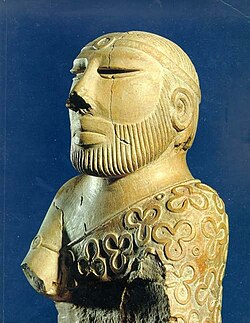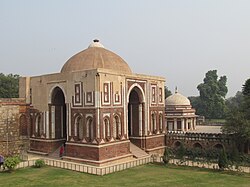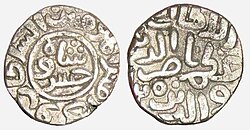Khalji dynasty

Map of Khalji sultanate within South Asia.
| History of Pakistan |
|---|
| Timeline |
|
|
|
|
Early modern
|
|
Modern
|
|
History of provinces
|
The Khalji dynasty was a Muslim dynasty of Turkic origin. It ruled large parts of South Asia between 1290 and 1320.[1][2][3]
Khalji Dynasty Media
Coin of Tegin Shah, described as "Iltäbar (sub-King) of the Khalaj", dated to the year 728 CE.
Coinage of Jalaluddin Firuz Khalji. Delhi mint. Dated AH 691 (1291-2 AD). Legend citing the caliph Al-Musta'sim.
The Alai Darwaza, completed in 1311 during the Khalji dynasty.
Gold coinage of Alauddin Khalji (AH 695-715 / AD 1296–1316). Dar al-Islam mint. Dated AH 709 (AD 1309–10).
Coinage of Khusrau Khan.
The Koh-i-Noor diamond was seized by Alauddin Khalji's army in 1310, from the Kakatiya dynasty in Warangal.[4]
Window of Alai Darwaza.
References
- ↑ "Khalji Dynasty". Encyclopædia Britannica. Retrieved 2014-11-13.
This dynasty, like the previous Slave dynasty, was of Turkish origin, though the Khaljī tribe had long been settled in Afghanistan. Its three kings were noted for their faithlessness, their ferocity, and their penetration of the Hindu south.
- ↑ Dynastic Chart The Imperial Gazetteer of India, v. 2, p. 368.
- ↑ Sen, Sailendra (2013). A Textbook of Medieval Indian History. Primus Books. pp. 80–89. ISBN 978-9-38060-734-4.
- ↑ Hermann Kulke & Dietmar Rothermund 2004.








